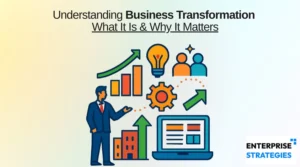There are many things that we need in life and in this day an age you don’t have to look to far to find an app specifically designed for each one of them. I am very excited to live during this time period and a strong proponent of the “digitification” of life and business that has occurred over the last several years. I do, however, find myself more frequently asking, “Do I really need another ____ ?” Lately I’ve noticed this question has actually turned into a plea, “Please, not another!” Why? I think there is a strong argument for the inverse effect of too many good things. I also think that information overload is real, if you let it be. The underlying cause of my digital frustration is … context, or more specifically, lack thereof. There is a simple, refined beauty in a small, well-packaged best in class solution. I know what problem it solves. I know how to use it. When I am done, I put it away and am on to something else. This design paradigm is optimal when your solution can be compartmentalized. A breakdown occurs when it cannot.
In 2013 I spent a great deal of time researching the use of social media tools inside major organizations (e.g., social intranets, enterprise social networks, social CRM, etc.). There were several success stories in 2013, and we at Enterprise Strategies are thankful to have been a part of some of them. However, there were also several not-quite-a-success stories or stories that started out strong, but ended before the protagonist could reasonably claim success. These are the stories that interested me the most. Again, the question, “Why?” In researching why enterprise social networks fail, the theme of company culture came up quite frequently. And admittedly, I do think company culture plays a large part in the successful adoption and prolonged usage of social tools. I would term culture though not as a reason for success or failure, but more as an attribute that needs to be considered as you create your company social and digital strategy. If forced to pick the number one reason why social initiatives fail inside organizations, I would choose (yes, you guessed it)…
Context.
In our personal lives, context is often centered on people. We are social animals and as such many of our day-to-day processes are centered on individuals. For example, I may need to take my daughter to the school bus and my dog in to see the vet. Transpose the context of these actions and suddenly I have a daughter taking heartworm medicine and a chow terrier in first grade. Context matters. In fact, I would argue that context matters as much in our business lives as in our personal lives. Very few people today would argue against the potential benefits of collaborating inside of companies — types of collaboration notwithstanding — however, in business especially, actions speak louder than words and time continues to be our world economy’s most limited resource. In a perfect setting, I would readily embrace the opportunity to experiment with different tools, technologies and new ways of working. When trying to meet a deadline, however, that same desire is trampled underfoot in my rush to find the quickest path to point b — which, in perception at least, is the path taken safely several times before.
Two Problems With The Concept Of Business Collaboration.
This presents two problems with the concept of business collaboration. For one, it is a new way of working of which most employees are unfamiliar. Second, and equally important, our business environments are not set up to support it. Both of these problems can be distilled down to one word. If I do not understand how and why collaboration will help me reach my business objectives better and faster, I am not going to invest the time. If collaboration is not baked into the systems and processes I use to complete my business function, I do not have to the time to invest. What is the missing element in both problem scenarios?
________________________________________
con·text noun ˈkän-ˌtekst : the situation in which something happens : the group of conditions that exist where and when something happens
________________________________________
 Free Download: Top 5 Reasons Enterprise Social Initiatives Fail
Free Download: Top 5 Reasons Enterprise Social Initiatives Fail
[vc_separator type=’transparent’ position=’center’ color=” thickness=’10’ up=” down=”]
In this download, you will find the following information:
- The most common reasons enterprise social initiatives fail and what you can do to avoid them
- Enterprise social initiative best practices
- What we have learned from delivering several successful enterprise social initiatives at our clients
[vc_separator type=’transparent’ position=’center’ color=” thickness=’10’ up=” down=”]
[button size=” style=” text=’Get Your Free Download’ icon=” icon_color=” link=’/free-e-book-top-5-reasons-social-enterprises-fail/’ target=’_self’ color=” hover_color=” border_color=” hover_border_color=” background_color=” hover_background_color=” font_style=” font_weight=” text_align=” margin=”]
[vc_separator type=’transparent’ position=’center’ color=” thickness=’30’ up=” down=”]
How do you address the issue of context in implementing social business? There is a one word response to this question as well:
Integration.
Integration in this case in takes two forms. The first is integration of knowledge. The second is integration of an enabling system. Integrating knowledge is really just a fancy way of saying training. And yes, I know, training is no longer an acceptable word in corporate lexicon. Somewhere along the way, our corporate psyche began to associate “training” with weakness. It became a word signifying admittance that we as employees may not know everything. I have witnessed this phenomenon even more strongly in the executive ranks. So much so that we have moved from calling our social business training for senior leaders to executive mentoring. Further compounding this problem are two factors. First are the millions of dollars spent by enterprise software vendors each year to convince us that their tools are easy, intuitive, and require no training dollars (this last point is further reinforced by every software field sales rep that ever visits your office). In fact, these tools are more intuitive and much easier to use than they have ever been. That, however, is not the point. Just because a tool is easy to use, does not mean it will go viral within your organization. It also puts undue focus on the “tool.” What we are really talking about here is a technology implementation, but a “process” change. We need to teach people a new way of working and integrate this knowledge in to our culture and way of doing things as an organization. The tools are just enablers. Second, with regards to training, who has time for it? This is my plea to you and your company to strive to become a learning organization and integrate continuous learning into your day-to-day process of doing business. Integrating knowledge alone, however, is not enough. We live and work in a digital environment. During the industrial revolution it was easy for management to know and understand that without the right manufacturing equipment it would be impossible to produce quality product. This concept seems to have been lost in our digitally based information economy. If you want employees to be more collaborative, socially sharing and productive, you need to enable them with the tools to do so. There is an important nuance however. These enabling tools cannot be standalone.
Social Business Tools Need To Be Integrated Into Critical Business Systems.
If I am a sales professional, my critical business system is likely my company’s Customer Relationship Management (CRM) system. This is where I can find all of the information on my accounts, opportunities, contacts — and basically where I spend all my time when interacting with this information. I know that posting my request for a particular type of expertise (e.g., that I need for an RFP response) to my company’s enterprise social network is both the right thing to do and likely to produce desired results — but if I have to physically leave what I am doing — I am not going to do it. Take this one example, and extrapolate it across the myriad of roles and systems that exist in your organization. Add to this the human and business realities previously discussed. You now understand why most enterprise social network (and social business) projects fail. In my next post, I will talk about companies (both software and clients) that are transcending these challenges and operationizing social business. Have your own story? Share it below.
We can accomplish more together, in context.
To see previous posts in the series 5 Reason Enterprise Social Initiatives Fail click below:
Why Enterprise Social Network Pilots Don’t Take Flight
Show Me The Money: One Reason For Enterprise Social Failure
The Importance Of An Enterprise Social Strategy: Are You Driving Blind Through Social?
The Missing Part Of Your Enterprise Social Network: Executive Support




